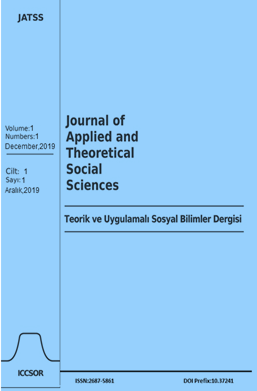Modern İsveç’in Oluşumu
Özet
İsveç, günümüzün refah seviyesi en yüksek ülkelerinden biridir. Bu başarının arkasında yatan sebepler, sadece tarihsel bir perspektifle anlaşılabilir. İsveç tarihine bakıldığında, ülkenin kültür, toplum, siyaset ve ekonomisini şekillendiren üç belirgin olayın öne çıktığını fark ettim. 16. yüzyılda erken modern dönemle başlayıp, 19. yüzyılın ikinci yarısında modern dönemde biten bu üç olay (kronolojik sırayla), 16. yüzyıldaki İsveç Reform Hareketi ve I.Gustav dönemi, 17. yüzyıldaki İsveç İmparatorluğu’nun yükselişi ve 19. yüzyılın ikinci yarısında İsveç’teki endüstriyelleşme hareketidir.
Bu makalede, bu üç olayın etkileri İsveç kültürü, devlet bürokrasisi, siyaseti, toplumu, dini, ekonomisi ve askeriyesi üzerindeki tesirleri ve arka planlarıyla beraber analiz edilecektir. Bu olayların arka planları üzerine olan çalışma, birbirleri üzerinde güçlü etkileri olduğunu göstermiştir. Ayrıca bununla sınırlı kalmayıp, onların etkisi günümüz İsveç’ini şekillendirmiştir. Günümüzün yüksek hayat standartları göz önünde bulundurulduğunda, modern İsveç’in oluşumu bir başarı hikâyesidir ve bunu tarihsel bir analizle anlamak dünya çapında karar verici mevkilerde bulunanlara yardımcı olabilir.
##plugins.generic.paperbuzz.metrics##
Referanslar
Arrison, John G. (1994), ‘‘Time Capsule from the 17th Century: Stockholm’s Vasa Museum.’’ Technology and Culture 35, 1, 158 – 167. DOI: https://doi.org/10.2307/3106752
Beck, Andrew (1940), ‘‘The Rise and Fall of Catholic Sweden.’’ An Irish Quarterly Review 29, 115, 382 – 394.
Bergh, Andreas (2011), ‘‘The Rise, Fall and Revival of the Swedish Welfare State: What are the Policy Lessons from Sweden?,’’ IFN Working Paper, 873, 1-29. DOI: https://doi.org/10.2139/ssrn.1884528
Bowman, Franscis J. (1942), ‘‘Sweden’s Wars, 1611-32.’’ The Journal of Modern History 14, 3, 357 – 369. DOI: https://doi.org/10.1086/236637
Edvinsson, Sören, Hans Nilsson (1999), ‘‘Swedish Towns during Industrialization.’’ Annales de demograhie historique, 2, 63-96. DOI: https://doi.org/10.3406/adh.2000.2168
Erixon, Lennart (1997), ‘‘The Swedish Growth Engine.’’ In The Golden Age of the Swedish Model - The Coherence between Capital Accumulation and Economic Policy in Sweden in the Early Postwar Period, Oslo: Institute for Social Research, 12-21.
Fisher, Douglas (1992), ‘‘Sweden during the Industrial Revolution.’’ In The Industrial Revolution, 190-223. London: Palgrave Macmillan, 1992. DOI: https://doi.org/10.1007/978-1-349-22391-6_6
Glete, Jan (2006), ‘‘The Swedish fiscal-military state in transition and decline, 1650-1815.’’ paper to the XIV International Economic History Congress, 1 – 16.
Gonzalez, Joseph (2006), ‘‘Rewriting History: Humanist Oration at the Funeral of Gustav Vasa, 1560.’’ Scandinavian Studies 78, 1, 21 – 42.
Jonsson, Inge (1999), ‘‘Swedish Culture in a European Context.’’ Proceedings of the American Philosophical Society 143, 1, 148 – 156.
Maas, Ineke, Marco H. D. van Leeuwen (2002). ‘‘Industrialization and Intergenerational Mobility in Sweden.’’ Acta Sociologica 45, 3, 179-94. DOI: https://doi.org/10.1177/000169930204500301
McKeown, Simon (2009), ‘‘Reading and Writing the Swedish Renaissance.’’ Renaissance Studies 23, 2, 141 – 150. DOI: https://doi.org/10.1111/j.1477-4658.2009.00556.x
Palm, Lennart Andersson (2016), Sweden’s 17th century – a period of expansion or stagnation?. Göteborg: Institutionen för historiska studier, Göteborgs universitet, 2016.
Schön, Lennart, ‘‘Sweden – Economic Growth and Structural Change, 1800-2000.’’ Accessed May 11, 2019. https://eh.net/encyclopedia/sweden-economic-growth-and-structural-change-1800-2000/
Schön, Lennart, Olle Krantz (2012). ‘‘The Swedish economy in the early modern period: constructing historical national accounts.’’ European Review of Economic History 16, 4, 529-49. DOI: https://doi.org/10.1093/ereh/hes015
Skarsten, Trygve R. (1980), ‘‘The Reception of the Augsburg Confession in Scandinavia.’’ The Sixteenth Century Journal 11, 3, 86 – 98. DOI: https://doi.org/10.2307/2540157
Thuringer, Rune P. (1973), ‘‘The Catholic Church in Sweden.’’ The Furrow 24, 2, 67 – 74.
Encyclopedia Britannica. ‘‘Church of Sweden.’’ britannica.com. https://www.britannica.com/topic/Church-of-Sweden (accessed November 10, 2018).
The Reformation. ‘‘The Reformation in Scandinavia.’’ thereformation.info. https://www.thereformation.info/scandinavia/ (accessed November 10, 2018).
The World Wide Web Virtual Library. ‘‘Chapter 12: The Reformation in Germany and Scandinavia.’’ vlib.iue.it. http://vlib.iue.it/carrie/texts/carrie_books/gilbert/12.html (accessed November 10, 2018).
University of Wisconsin-Madison. ‘‘Sweden in the Seventeenth Century.’’ faculty.history.wisc.edu/sommerville. https://faculty.history.wisc.edu/sommerville/351/Sweden.html (accessed December 15, 2018).
Upton, A. F. (1987), ‘‘The Riksdag of 1680 and the Establishment of Royal Absolutism in Sweden.’’ The English Historical Review. 102, 403, (1987). 281 – 308. DOI: https://doi.org/10.1093/ehr/CII.403.281
Valocchi, Steve (1992). ‘‘The Origins of the Swedish Welfare State: A Class Analysis of the State and Welfare Politics’’ Social Problems 39, 2, 189-200. DOI: https://doi.org/10.2307/3097037






















